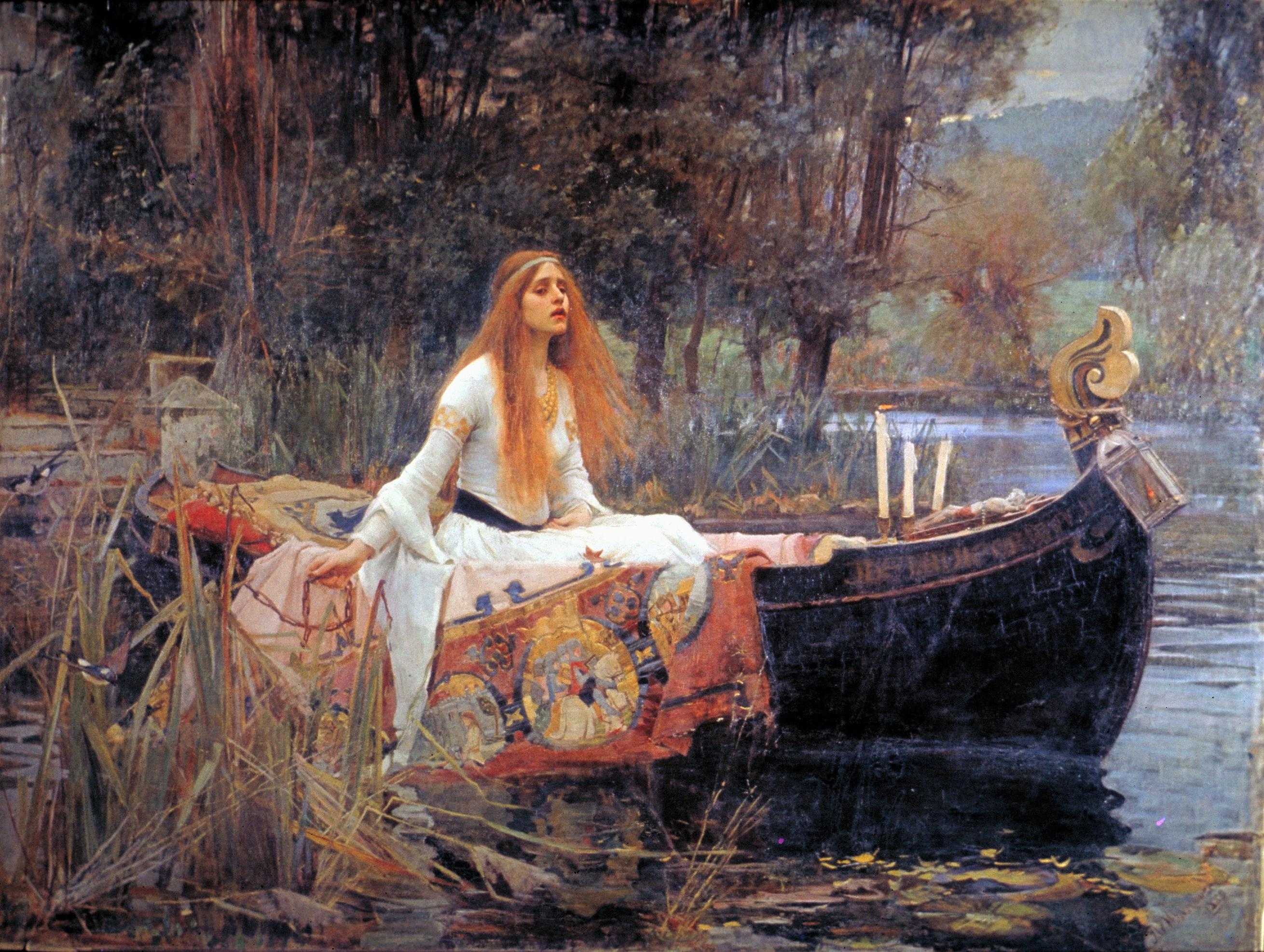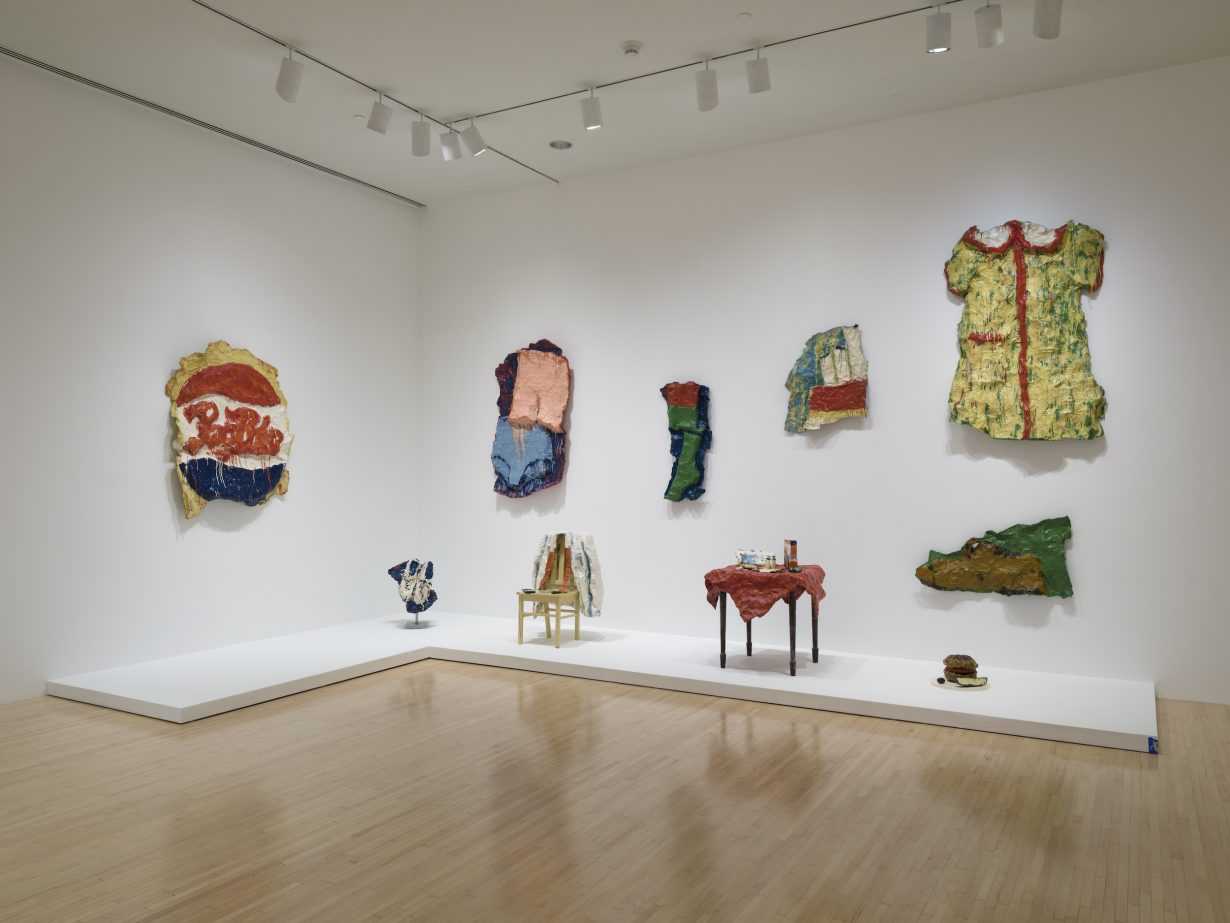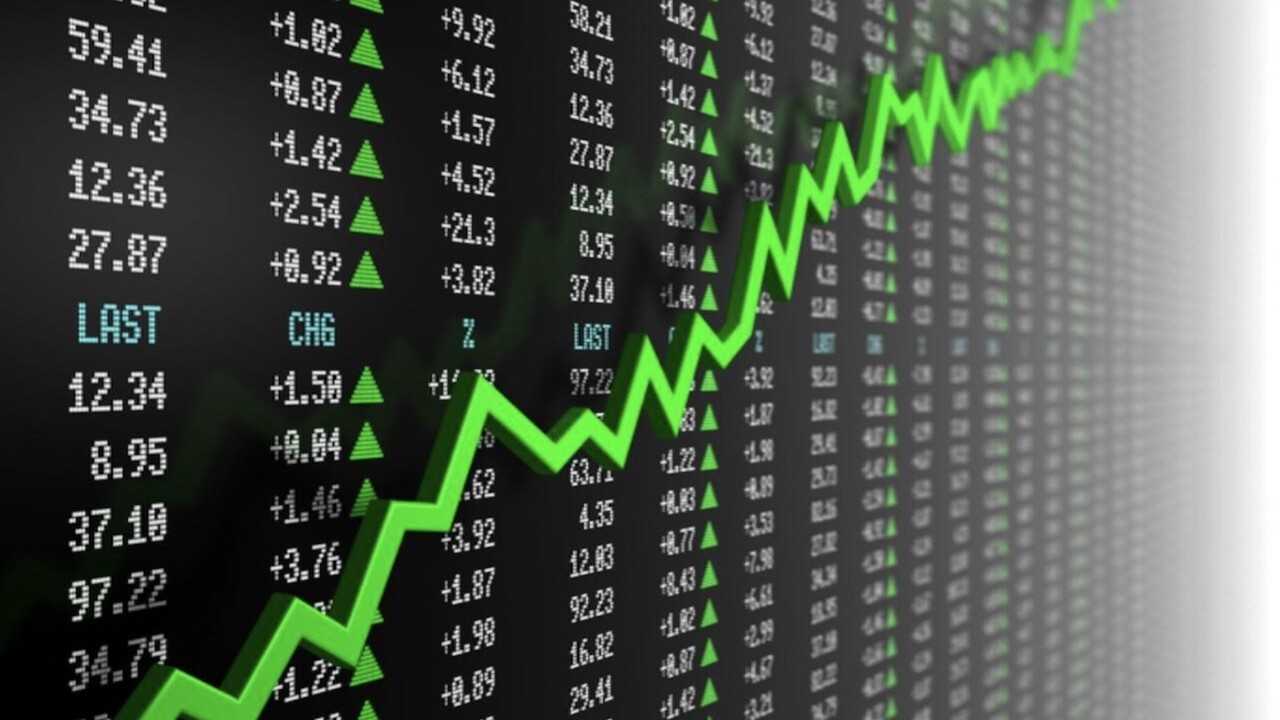Table of Contents
- Exploring the Evolution of American Fine Art Through the Decades
- Understanding the Influential Techniques and Styles of Notable American Artists
- Connecting with the Contemporary Art Scene: Must-See Exhibitions and Galleries
- Investing in Fine Art: Tips for Starting Your Collection of American Masterpieces
- Q&A
- Key Takeaways


Exploring the Evolution of American Fine Art Through the Decades
The progression of American fine art mirrors the nation’s rich cultural tapestry, evolving through various historical and social contexts. In the early 19th century, the American art scene was heavily influenced by European styles, with artists like Washington Allston and Thomas Cole paving the way for a unique identity. The Hudson River School emerged during this period, characterized by dramatic landscapes and a celebration of the American wilderness. This movement not only embodied the Romantic spirit but also reflected burgeoning nationalism, as artists sought to capture the essence of the American landscape.
As the 20th century dawned, the art world was entering a transformative phase, with movements such as Modernism challenging traditional boundaries. Innovators like Georgia O’Keeffe and Charles Sheeler embraced abstraction, moving away from realistic representations to explore new forms and perspectives. The advent of photography also profoundly influenced visual art, as artists began to incorporate photographic techniques into their work, blurring the lines between media. This period was marked by a growing emphasis on individuality and self-expression, reshaping the role of the artist within society.
The mid-20th century saw the rise of Abstract Expressionism, which dominated the American art scene. Artists like Jackson Pollock and Mark Rothko pushed against the constraints of traditional representation, focusing instead on the emotional and psychological impact of color and form. Their work prompted viewers to engage with art on a deeply personal level, fostering a sense of connection that was previously uncharted. This era not only changed perceptions of artistic value but also established New York as a global art capital, overtaking Paris.
Moving towards the late 20th and early 21st centuries, fine art further diversified with the advent of postmodernism and contemporary practices. Artists began to question cultural narratives and identity, using their work as a platform for social commentary. Key themes that emerged include:
- Identity Politics
- Globalization
- Technological Influence
- Installation Art
This period also witnessed the integration of technology in art practices, with digital art gaining recognition alongside traditional forms. Today, American fine artists continue to reflect a myriad of experiences and perspectives, exploring the intersection of culture and creativity as they navigate a world defined by rapid change.


Understanding the Influential Techniques and Styles of Notable American Artists
In the vast landscape of American art, several techniques and styles have emerged, each capturing the essence of diverse experiences and cultural narratives. These artists have brought unique perspectives to their work, shaping the art world through innovative methods. Among these influential techniques, one can identify expressionism, abstract art, and realism, which serve as powerful tools for communication and self-expression.
Expressionism, for instance, pushes the boundaries of emotional expression. Artists like Edward Munch and Jackson Pollock utilized bold colors and dynamic brushwork to convey intense feelings and visceral experiences. This approach often transcends traditional representation, aiming instead to evoke raw emotion and engage viewers on a more profound level. The spontaneity of a Pollock painting, with its dripped paint and chaotic composition, invites the audience to experience art in an instinctual way.
Abstract art, championed by figures such as Wassily Kandinsky and Mark Rothko, focuses on the exploration of color, form, and line rather than the depiction of recognizable subjects. This style encourages interpretation and invites viewers to find personal meaning in the absence of defined forms. The powerful use of color in Rothko’s works, for example, can evoke feelings of contemplation and serenity, drawing the viewer into a deeper emotional space.
| Technique/Style | Key Artists | Core Focus |
|---|---|---|
| Expressionism | Edward Munch, Jackson Pollock | Emotional depth and raw expression |
| Abstract Art | Wassily Kandinsky, Mark Rothko | Exploration of color, form, and emotion |
| Realism | Thomas Eakins, Winslow Homer | Authentic representation of everyday life |
Realism, distinct from its predecessors, seeks to depict subjects as they are, often highlighting ordinary moments of life. Artists like Thomas Eakins and Winslow Homer focused on detailed representations of the human experience, emphasizing the beauty in simplicity. Their commitment to accuracy provides a window into the time and culture they lived in, resonating with viewers by portraying relatable scenes filled with authenticity and depth.


Connecting with the Contemporary Art Scene: Must-See Exhibitions and Galleries
Exploring the dynamic world of contemporary art can be both an invigorating and a transformative experience. To truly immerse yourself in the culture of the moment, visiting prestigious exhibitions and innovative galleries is essential. Many cities across the United States host a vibrant array of art shows, showcasing works from emerging talents and established names alike. Be sure to keep an eye out for shows that feature interactive installations and multimedia expressions, as these are the hallmarks of today’s artistic landscape.
Among the must-visit venues, New York City stands out with its prolific art scene. The Whitney Museum of American Art frequently changes its exhibitions to highlight diverse narratives from contemporary artists. In addition to the Whitney, be sure to explore Chelsea’s gallery district, where you can find dozens of contemporary spaces, each with its unique flavor. Here, you’ll encounter everything from minimalistic sculptures to vibrant street art reimagined for the gallery context.
Traveling to the West Coast? Don’t miss the San Francisco Museum of Modern Art (SFMOMA). This renowned institution has expanded recently to create a more accessible experience for visitors, including outdoor spaces showcasing large-scale works. Another exciting destination is the Los Angeles County Museum of Art (LACMA), where exhibitions often merge film, design, and traditional art forms, reflecting the merging of disciplines that is so prevalent today.
| City | Gallery/Exhibition | Highlights |
|---|---|---|
| New York City | Whitney Museum | American artists, diverse narratives |
| San Francisco | SFMOMA | Outdoor installations, modern art |
| Los Angeles | LACMA | Film, design, and contemporary fusion |
Remember, visiting local galleries can also provide a glimpse into the next wave of American artistry. Many towns and cities are home to smaller spaces that host community shows and experimental works. Some of these hidden gems often feature local artists who push boundaries and engage with current issues, making their work relevant and resonant. Engaging with artists during their opening receptions can also provide insights into their creative processes, fostering a deeper appreciation for their contributions to the art world.


Investing in Fine Art: Tips for Starting Your Collection of American Masterpieces
When venturing into the world of fine art, particularly American masterpieces, it’s essential to start with a clear understanding of your tastes and interests. Consider what resonates with you personally. Do you lean towards abstract expressions, realistic portrayals, or perhaps the vibrant colors of the Impressionists? Knowing your preferences will guide your selections and enhance the joy of building your collection. Additionally, spending time at galleries, attending art fairs, and exploring online platforms can provide crucial insights into the different styles and eras available.
Establishing a budget is a critical step in the collection process. Fine art can range from affordable prints to multi-million-dollar originals. It’s important to set a realistic budget that reflects your financial situation while also allowing for growth in your collection. Researching the current market value of artists you’re interested in will equip you with the knowledge necessary to make informed purchases. Here’s a simple approach to consider when budgeting for your art collection:
| Category | Price Range | Examples |
|---|---|---|
| Prints | $100 - $1,000 | Limited Editions of Known Artists |
| Emerging Artists | $1,000 - $5,000 | Local Talent and New Discoveries |
| Established Artists | $5,000+ | Renowned American Masters |
Networking and building relationships with galleries and artists can significantly benefit your collection journey. Many art collectors find value in collaborating with art advisors or curators who possess expertise and a keen eye for hidden gems. Participate in local art events, join collector clubs, and engage with online communities to expand your knowledge base. Personal connections often lead to exclusive previews and access to upcoming exhibitions, allowing for opportunities to acquire pieces that may not yet be widely available.
Lastly, the story behind a piece can be as valuable as the artwork itself. Each masterpiece often comes with a narrative about the artist’s intentions, the period it was created in, and even the journey it has taken before reaching you. When building your collection, prioritize acquiring not just visually appealing works but those that intrigue you and resonate on a personal level. Keep detailed records of your collection, including provenance, exhibition history, and your thoughts on each piece; this enhances your understanding and appreciation, enriching your overall collecting experience.
Q&A
Q&A: Understanding American Fine Artists
Q: What defines an American fine artist? A: An American fine artist is typically someone who creates art that emphasizes aesthetic value and inventive expression. This can range across various mediums, such as painting, sculpture, photography, and installation art. These artists often draw inspiration from American culture, history, and social issues, creating work that resonates both nationally and internationally.Q: How has American fine art evolved over the decades? A: The evolution of American fine art is marked by a series of movements, from the realism of the 19th century to the abstract and conceptual trends of the 20th century. Key influences include the Harlem Renaissance, Abstract Expressionism, and Pop Art, showcasing the diversity of experiences and perspectives in the U.S. Today, contemporary American fine art continues to push boundaries, often incorporating technology and addressing global themes.
Q: Who are some prominent American fine artists I should know? A: Several influential artists have shaped the landscape of American fine art, including Georgia O’Keeffe, known for her stunning depictions of flowers and landscapes; Jackson Pollock, a pioneer of Abstract Expressionism; and Cindy Sherman, recognized for her innovative photographs exploring identity. Each of these artists has made significant contributions, reflecting distinct aspects of American life.
Q: What role does American fine art play in contemporary society? A: American fine art plays a vital role in contemporary society by provoking thought, inspiring dialogue, and promoting cultural awareness. Many artists address pressing social issues, such as race, gender, and environment, allowing art to serve as a platform for activism and reflection. These works not only enrich our cultural landscape but also encourage viewers to engage with critical contemporary themes.
Q: How can one support American fine artists? A: Supporting American fine artists can take many forms. Purchasing their work, attending exhibitions, and participating in local art events help sustain their careers. Additionally, sharing their art on social media or advocating for the importance of arts funding contributes to a broader appreciation and understanding of the arts community.
Q: Where can I find American fine art? A: American fine art can be discovered in various places, including galleries, museums, art fairs, and online platforms dedicated to showcasing artists. Large institutions like the Museum of Modern Art (MoMA) and the Whitney Museum in New York City are great starting points, while many smaller galleries feature emerging talents. Online marketplaces also provide access to a diverse range of artists and their works.
Q: What skills are essential for aspiring American fine artists? A: Aspiring American fine artists should cultivate a range of skills, including technical proficiency in their chosen medium, creativity, and an understanding of art history. Moreover, critical thinking and the ability to communicate their concepts are crucial. Networking and marketing skills can also aid in gaining visibility and building a supportive community around their work.
Q: Can anyone become an American fine artist? A: Yes, anyone can become an American fine artist with passion, dedication, and a willingness to explore their creative voice. While formal education in art can provide valuable skills and knowledge, many successful artists are self-taught. The key is to continue experimenting, learning, and engaging with the artistic community to develop one’s unique perspective. — This Q&A aims to provide a comprehensive overview of American fine artists, encouraging art enthusiasts and newcomers alike to explore and appreciate the diverse world of fine art in America.
